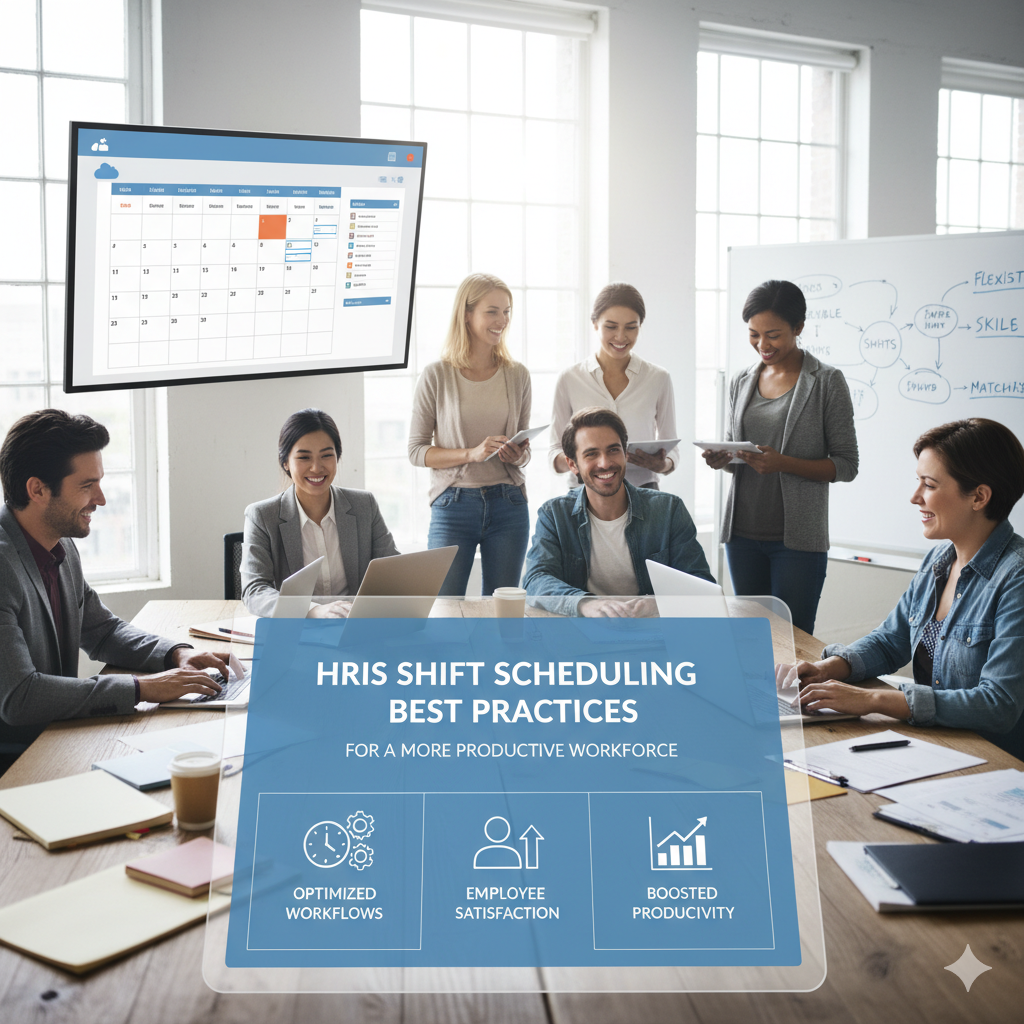Address
Kaypian, San Jose Del Monte City, Bulacan Philippines
Work Hours
Monday to Friday: 8AM - 6PM
Weekend: 10AM - 5PM
Address
Kaypian, San Jose Del Monte City, Bulacan Philippines
Work Hours
Monday to Friday: 8AM - 6PM
Weekend: 10AM - 5PM


Integrated HR. Accurate Payroll.


Integrated HR. Accurate Payroll.

In today’s fast-paced business environment, effective shift scheduling isn’t just an operational task—it’s a strategic advantage. Manual scheduling methods often lead to errors, overstaffing, understaffing, and employee dissatisfaction. A Human Resource Information System (HRIS) helps organizations automate scheduling, ensure compliance, and enhance workforce productivity.
But to get the most out of your HRIS scheduling module, businesses need to follow proven best practices. This article explores the top strategies to help you maximize efficiency, engagement, and accuracy through HRIS shift scheduling.
Your scheduling is only as good as the data supporting it.
To optimize shift planning:
Clean, accurate data prevents conflicts and misassignments, allowing the HRIS to auto-generate reliable schedules.
Before automating shifts, clearly define the rules the HRIS should follow:
When these policies are built into your HRIS, it eliminates guesswork and ensures compliance across the organization.
One of the biggest advantages of HRIS scheduling is automation. By using automated features, you can:
Automation not only saves time but improves fairness and consistency.
Employee self-service is a game changer for workforce productivity. Through HRIS portals or mobile apps, workers should be able to:
Self-service reduces the administrative burden on HR and improves employee satisfaction—leading to a more motivated workforce.
Effective shift scheduling is driven by business demand. Use your HRIS data and analytics to:
Smart forecasting ensures labor costs stay controlled while customer service levels remain high.
Labor law violations can be costly. HRIS systems help ensure compliance by automatically managing:
Set up real-time alerts and periodic compliance reports to identify risks before they become issues.
Even the best schedules need human insight. Encourage employees to share feedback on:
Use this feedback to refine HRIS rules and templates. Engaged employees are more productive, cooperative, and reliable.
Your HRIS offers rich sources of data. Review your shift scheduling performance regularly:
Use these insights to optimize scheduling templates and improve your workforce strategy over time.
Implementing HRIS shift scheduling best practices allows organizations to streamline operations, reduce administrative workload, and build a more engaged and productive workforce. When used effectively, an HRIS becomes more than just a scheduling tool—it becomes a strategic driver of operational excellence.
Whether you’re upgrading your current system or implementing HRIS shift scheduling for the first time, following these best practices ensures long-term success.